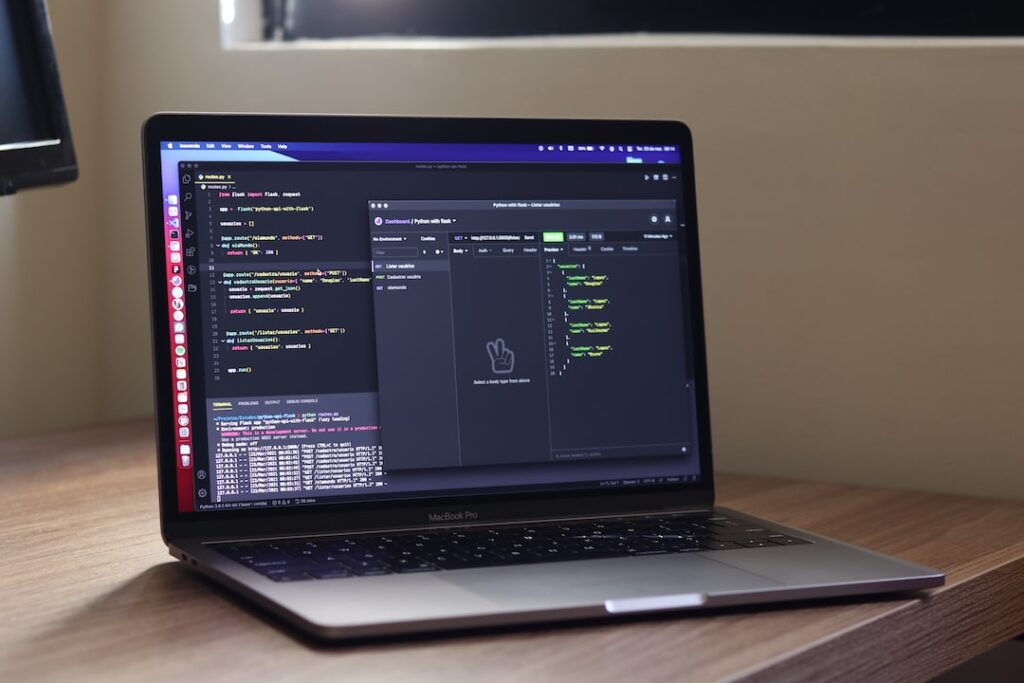Welcome to the world of plagiarism detection!

Ensuring originality and authenticity in written content is paramount. The prevalence of online resources makes it easier for individuals to inadvertently or intentionally plagiarize. To combat this issue, utilizing a free plagiarism checker tool is essential. These tools scan through text, comparing it against a vast database to identify any instances of duplicated content. Whether you are a student submitting an academic paper, a content creator publishing articles, or a professional drafting reports, checking for plagiarism can safeguard your reputation and credibility. By detecting similarities with existing content, you can make necessary revisions to maintain integrity and avoid potential consequences. Join us on a journey to explore the significance of plagiarism detection and learn how these tools can be your ally in upholding originality.
Impact of Plagiarism
Consequences of Plagiarism
Plagiarism, the act of using someone else’s work without proper citation or permission, can have significant consequences for individuals and institutions. Some of the key consequences of plagiarism include:.
-
Academic Consequences: Plagiarism in academic settings can lead to severe penalties such as failing grades, academic probation, or even expulsion. It undermines the core values of education and intellectual integrity.
-
Legal Consequences: In some cases, plagiarism can result in legal action, especially if the original work is copyrighted. This can lead to fines or other legal penalties.
-
Professional Consequences: For professionals, being caught for plagiarism can damage their reputation and credibility. It can result in loss of job opportunities, promotions, or even professional licenses.
Damage to Reputation and Integrity
Plagiarism not only affects the individual who commits it but also damages the reputation and integrity of the organization or institution they are associated with. Some of the ways plagiarism can impact reputation and integrity include:.
-
Loss of Trust: Plagiarism erodes trust among peers, colleagues, and the general public. It undermines the credibility of the plagiarist and the organization they represent.
-
Diminished Quality: Plagiarized work is often of inferior quality compared to original content. When plagiarism is detected, it reflects poorly on the standards and values of the organization.
-
Legal Issues: Organizations that tolerate or promote plagiarism can face legal repercussions. This can lead to lawsuits, financial losses, and long-term damage to the organization’s reputation.
Ethical Implications
Beyond the immediate consequences, plagiarism raises significant ethical concerns. It violates the principles of honesty, integrity, and respect for intellectual property. When individuals resort to plagiarism, they not only deceive others but also compromise their own moral standards.
Academic Integrity
Maintaining academic integrity is crucial in upholding the value of education. Plagiarism undermines the learning process by hindering critical and creative thinking. It deprives individuals of the opportunity to develop their skills and knowledge authentically.
Strategies for Avoiding Plagiarism
To combat plagiarism, individuals and organizations can implement various strategies. These include proper citation practices, conducting plagiarism checks using software tools, and fostering a culture of academic honesty and originality.
Plagiarism poses serious risks to individuals and institutions, ranging from academic and legal consequences to reputational damage. By understanding the implications of plagiarism and promoting ethical behavior, we can safeguard the integrity of intellectual work and uphold the principles of honesty and originality in all endeavors.
Why Use a Plagiarism Checker
Ensuring Content Originality
Where information is readily accessible, maintaining the originality of content is crucial. Plagiarism checkers play a vital role in helping writers, students, and professionals ensure that their work is unique and not copied from other sources. These tools compare the submitted content against a vast database of existing works, highlighting any similarities and providing a percentage of originality. By utilizing a plagiarism checker, individuals can verify the authenticity of their content and avoid any accusations of academic dishonesty or copyright infringement. Moreover, original content is more likely to engage readers, boost credibility, and contribute to a positive online presence.
Avoiding Ethical and Legal Issues
Plagiarism is a serious offense that not only undermines one’s credibility but can also have legal ramifications. Whether in academic, professional, or creative settings, failing to attribute sources correctly can result in severe consequences. Utilizing a plagiarism checker is a proactive step towards maintaining ethical standards and complying with copyright laws. These tools help individuals identify any instances of unintentional plagiarism, such as improper paraphrasing or unquoted references, allowing them to rectify the issues before facing any repercussions. By fostering a culture of originality and respect for intellectual property rights, plagiarism checkers contribute to upholding academic integrity and professional ethics. Embracing these tools not only safeguards one’s reputation but also promotes a climate of honesty, transparency, and accountability in the digital landscape.
Enhancing Writing Skills
Apart from ensuring content originality and avoiding ethical pitfalls, using a plagiarism checker can also aid in enhancing one’s writing skills. These tools provide valuable feedback on areas that may need improvement, such as proper citation techniques, paraphrasing, and overall writing style. By analyzing the plagiarism checker reports, individuals can learn from their mistakes, understand how to incorporate external sources effectively, and refine their writing to meet higher standards. Continuous use of a plagiarism checker fosters a habit of thorough research, critical thinking, and adherence to citation guidelines, which are essential skills for academic and professional success. Moreover, by actively engaging with the feedback provided by plagiarism checkers, writers can elevate the quality of their content, develop a strong voice, and establish themselves as credible and competent authors.
Promoting Academic Integrity
In educational institutions, maintaining academic integrity is paramount to ensuring fair evaluation and upholding the value of learning. Plagiarism undermines the educational process by devaluing original thought and creativity. By incorporating plagiarism checkers into their workflow, students can demonstrate a commitment to producing original work and respecting the intellectual contributions of others. This not only enhances the learning experience by encouraging independent thinking and research but also cultivates a culture of academic honesty and integrity. Educators can also benefit from using plagiarism checkers to efficiently assess student submissions, detect instances of plagiarism, and provide constructive feedback to nurture students’ writing skills and ethical conduct. By emphasizing the importance of academic integrity through the use of plagiarism checkers, educational institutions promote a culture of excellence, integrity, and mutual respect among students and faculty.
Conclusion
The utilization of plagiarism checkers offers numerous benefits beyond just detecting copied content. From ensuring content originality and avoiding ethical dilemmas to enhancing writing skills and promoting academic integrity, these tools serve as invaluable assets for writers, students, educators, and professionals alike. By embracing plagiarism checkers as allies in the quest for originality and professionalism, individuals can uphold ethical standards, improve their writing proficiency, and contribute to a climate of respect, honesty, and accountability in both academic and professional spheres.
Benefits of Utilizing a Plagiarism Checker Tool
Time-Efficient Content Analysis
Where content creation plays a pivotal role in engaging audiences, the importance of time efficiency cannot be overstated. A plagiarism checker tool offers a swift and efficient solution to analyze content without the need for laborious manual checks. By leveraging this tool, content creators can streamline their workflow, dedicating more time to crafting quality content rather than getting bogged down in plagiarism detection.
Enhanced Credibility and Trustworthiness
Establishing credibility and trust with your audience is fundamental in any content strategy. Originality serves as the cornerstone of credibility, and a plagiarism checker tool serves as a safeguard against unintentional content duplication. By verifying the authenticity of your content, you not only protect your reputation but also fortify the trust your audience places in your work. This commitment to originality not only bolsters your credibility but also positions you as a reliable source of information in your niche.
Comprehensive Plagiarism Detection
Beyond the surface-level benefits of time efficiency and credibility enhancement, plagiarism checker tools offer a deeper level of analysis. These tools provide detailed reports highlighting the percentage of original content, flagging potential sources of duplication, and even suggesting ways to rephrase content to improve originality. By delving into the nuances of content similarity, creators can fine-tune their work to meet the highest standards of authenticity.
SEO Optimization
In addition to safeguarding originality, plagiarism checker tools contribute to SEO optimization efforts. Search engines prioritize original and high-quality content, penalizing duplicated or plagiarized material. By ensuring the uniqueness of your content through a plagiarism checker, you can enhance your search engine rankings, driving organic traffic to your platform.
Educational Resource
Plagiarism checker tools also serve as valuable educational resources. By using these tools, content creators can gain insights into proper citation practices, attribution guidelines, and the importance of intellectual property rights. This educational aspect not only fosters a culture of respect for originality but also equips creators with the knowledge to navigate complex ethical considerations in the digital realm.
Conclusion
The benefits of utilizing a plagiarism checker tool extend far beyond the realm of content analysis. From time efficiency and credibility enhancement to comprehensive plagiarism detection, SEO optimization, and educational value, these tools are indispensable for content creators seeking to uphold the highest standards of integrity and originality in their work.
Introduction to Free Plagiarism Checker Tools
Accessibility and Affordability.
In this section, we will delve into the world of free plagiarism checker tools and how they have revolutionized the way individuals check for plagiarism. One of the most significant advantages of these tools is their accessibility and affordability. By offering free services, these tools have opened up the world of plagiarism detection to a wider audience, including students, writers, and professionals who may not have the financial means to invest in premium services.
User-Friendly Interface
Another crucial aspect to consider when discussing free plagiarism checker tools is the user-friendly interface they provide. These tools are designed with simplicity in mind, making it easy for users to scan their documents for plagiarism without any technical hurdles. The intuitive design and easy navigation of these tools have significantly enhanced the user experience, allowing individuals to upload their content effortlessly and receive comprehensive plagiarism reports within seconds.
Accuracy and Reliability
Apart from being accessible and user-friendly, free plagiarism checker tools also boast impressive accuracy and reliability. Through advanced algorithms and constant updates, these tools can detect even the slightest instances of plagiarism in a document, providing users with a reliable assessment of their content’s originality. This level of accuracy is crucial for students submitting academic papers, writers crafting unique articles, and professionals ensuring the authenticity of their work.
Additional Features
In addition to basic plagiarism detection, many free tools offer a range of supplementary features that further enhance their utility. These features may include citation assistance, grammar checks, and content analysis tools, providing users with a comprehensive platform for improving the quality of their writing. By offering a one-stop solution for various writing needs, free plagiarism checker tools have become indispensable resources for anyone looking to create original and high-quality content.
Conclusion
Free plagiarism checker tools have democratized access to plagiarism detection while prioritizing user experience, accuracy, and additional features. Whether you are a student, writer, or professional, these tools offer a convenient and reliable way to ensure the originality of your work. With their user-friendly interfaces and comprehensive functionalities, free plagiarism checker tools have become essential companions in the digital age of content creation.
How Free Plagiarism Checkers Work
Scanning and Comparison Process
When a user submits a document to a free plagiarism checker, the tool scans the text to identify any matching content available online. The tool breaks down the document into smaller segments and compares each segment to a vast database of online sources, including websites, academic papers, and publications. By using advanced algorithms, the plagiarism checker can detect similarities between the submitted text and existing content, highlighting potential instances of plagiarism. This process involves a deep analysis of the text structure, word usage, and sentence patterns to ensure a thorough comparison.
Interpreting Plagiarism Reports
Once the scanning process is complete, the plagiarism checker generates a detailed report outlining the findings. This report typically includes a percentage indicating the level of similarity between the submitted text and online sources. Users can interpret this percentage to determine the extent of plagiarism in their document. Additionally, the report may highlight specific sections of the text that are flagged for potential plagiarism, allowing users to review and address these areas accordingly. Understanding the nuances of the plagiarism report can help users pinpoint areas that require revision or further citation.
Enhanced Features of Modern Plagiarism Checkers
Beyond basic scanning and comparison, modern plagiarism checkers offer advanced features to improve the writing and editing process. Some tools provide detailed feedback on grammar, punctuation, and writing style, helping users enhance the overall quality of their content. Additionally, citation checking functionalities ensure proper referencing and adherence to citation guidelines, crucial for academic and professional writing.
Educational Value and Ethical Considerations
Free plagiarism checkers play a vital role in promoting academic integrity and ethical writing practices. By encouraging users to verify the originality of their work, these tools contribute to a culture of honesty and respect for intellectual property. Students, educators, and professionals benefit from the educational insights provided by plagiarism reports, which can serve as learning opportunities for improving writing skills and citation practices.
The functionality and significance of free plagiarism checkers extend beyond simple content comparison. These tools empower users to uphold high standards of originality and integrity in their writing, fostering a community of conscientious creators committed to producing authentic and well-referenced content.
Steps to Conduct a Plagiarism Check
Uploading Content for Analysis
When conducting a plagiarism check, the first step is to upload the content that needs to be analyzed. This can typically be done through online plagiarism checking tools or software. Ensure that the content is uploaded in the correct format and that any specific instructions or settings are followed. It is essential to choose a reliable plagiarism checker that can provide accurate results. Some tools offer additional features like citation checking, multiple file format support, and detailed reports.
Understanding Percentage of Similarity
After the content has been analyzed, you will receive a report indicating the percentage of similarity detected. It is important to understand what this percentage means. A higher percentage indicates a greater amount of content that is similar to existing sources. Carefully review the highlighted areas of similarity to determine if they constitute plagiarism or if they are properly cited and referenced. Remember, not all similarities are necessarily plagiarism; some may be common phrases or quotes. Use the plagiarism report as a guide to improve your writing and citation practices.
Importance of Plagiarism Checks
Plagiarism checks are crucial for academic integrity and professional credibility. By ensuring your work is original, you uphold ethical standards and avoid potential consequences of plagiarism. Educational institutions, publishers, and businesses often have strict policies against plagiarism, making it essential to conduct thorough checks before submitting any work. Additionally, plagiarism checks help you identify unintentional instances of accidental plagiarism, such as improper paraphrasing or missing citations.
Best Practices for Avoiding Plagiarism
In addition to conducting plagiarism checks, there are several best practices to avoid unintentional plagiarism. Always cite your sources properly using the appropriate citation style (e.g., APA, MLA, Chicago). Paraphrase information in your own words and provide citations for direct quotes. Take thorough notes during research to track sources and ideas. When in doubt, consult with a librarian or writing center for guidance on proper citation and research practices.
By following these steps and best practices, you can maintain the originality and integrity of your work while upholding ethical standards in writing and research.
Ensuring Proper Citation and Referencing
Importance of Citations
Proper citation is crucial in academic and professional writing. It gives credit to the original authors and sources, acknowledges their contributions, and helps readers trace the origins of ideas. Citations also lend credibility to your work by demonstrating thorough research and supporting your arguments with reputable sources.
Avoiding Unintentional Plagiarism
Plagiarism, whether intentional or unintentional, can have serious consequences. By citing sources correctly, you can avoid plagiarism and its repercussions. When in doubt, always cite the information, even if you’re paraphrasing. It’s better to overcite than to risk plagiarism.
The Impact of Proper Referencing on Research
Proper referencing not only acknowledges the work of others but also allows readers to delve deeper into your research. When you provide accurate references, you enable readers to verify the information you present and explore related studies. This enhances the credibility of your work and establishes you as a reliable source of information.
Enhancing the Quality of Your Writing Through Citations
Incorporating citations in your writing demonstrates a commitment to academic standards and ethics. It shows that you have engaged with existing literature, considered various perspectives, and built upon the ideas of others. Citations add depth and authority to your arguments, helping you present a well-rounded and informed viewpoint.
Developing Critical Thinking Skills
Engaging in proper citation and referencing practices fosters critical thinking skills. When you evaluate sources, determine their relevance, and integrate them into your writing while acknowledging their contributions, you are honing your ability to analyze information critically. This process not only strengthens your own arguments but also encourages you to think more deeply about the subject matter.
Importance of Consistent Citation Styles
Using a consistent citation style, such as APA, MLA, or Chicago, throughout your work is essential for clarity and professionalism. Consistency in citation formatting helps readers locate the sources you’ve referenced easily and promotes a polished presentation of your research.
Leveraging Technology for Citations
Numerous tools and software are available to assist in proper citation and referencing. Programs like Zotero, Mendeley, and EndNote can streamline the citation process, manage references, and generate bibliographies efficiently. Embracing these technological resources can simplify the citation process and ensure accuracy in your academic writing.
Remember, mastering the art of citation and referencing not only enhances the quality of your work but also demonstrates your respect for intellectual property and scholarly contributions.
Conclusion
Utilizing a free plagiarism checker is an essential tool in ensuring the originality and integrity of written work. By verifying the authenticity of content, individuals and institutions can uphold academic honesty, professional ethics, and intellectual property rights. Embracing this technology not only promotes a culture of originality but also safeguards against unintentional plagiarism, fostering a community committed to producing high-quality, authentic content.







